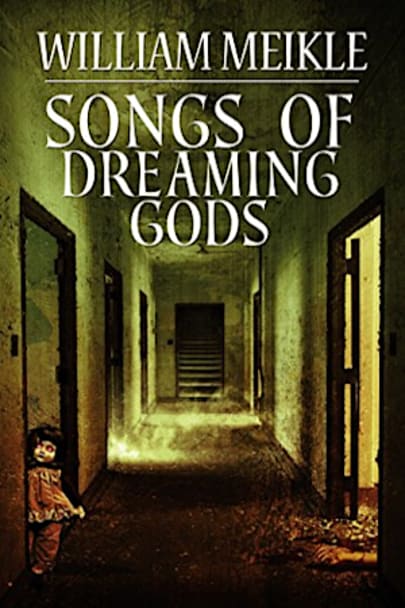The Dreaming God is singing where he lies. A mysterious house sits on a corner block on a hill in St. John’s, Newfoundland, in one of the oldest cities in North America, a non-descript, three-story wooden cube, going slowly to seed.When local cops, John Green, Janis Lodge and Todd Wiggins are sent to investigate a multiple murder on the top floor of the property, they start opening doors and … start opening doors and uncovering secrets. But like peeling the layers off an onion, each door opened only leads them deeper into the mystery.
There are houses like this all over the world, and those who suffer are drawn to them, as John, Janis and Todd have been drawn.
They have found their way in.
Can they find their way out again? And at what cost?
more



Another great story from William Meikle.
SONGS OF DREAMING GODS, by William Meikle, is another installment of his take on “special” houses that exist in locations where the veil between the living and the dead are the thinnest. This particular novel takes place in St. John’s, Newfoundland.
Called back early from the recovery of a nearly deadly stomach wound, John Green finds himself in charge of a particularly barbaric, multiple homicide. The location is an apartment in an otherwise untenanted building. Along with him, he brings Janis Lodge–who he had come to rely upon as much off the force, as on it–and Todd Wiggins.
“. . . There’s quiet, and there’s downright creepy . . .”
The atmosphere gets to the reader without any hesitation. After first seeing the signs of carnage and sending the lone survivor off to be questioned, a strange–almost physically obtrusive–fog encompasses the building. John finds himself on the inside, while his co-workers are on the outside.
Although the house was now “different” than the one he originally entered . . .
“Is this what the doctor meant when he said there might be mental instability? . . . I can tell you right now for nothing, I’m feeling pretty f—ing unstable.”
Each scene is designed to both give additional information about the situation, and to show the reader the individual characters. We learn about them–their history, current status, and fears–directly from the “observations” we garner as the novel progresses.
“. . . She knew that a foot-high doll couldn’t reach the door handle, but she also knew that dolls didn’t jump down off shelves and run across floors.”
With the “realities” of the building in constant fluctuation, you might expect to feel as lost as the characters themselves. However, Meikle is quite adept at getting his point across without necessarily having to spell everything out. The shroud of mystery is almost like a puzzle we have to solve in order to get to the prize.
“. . . The Dreaming God is singing where he lies . . . ”
Personally, I really enjoy this theme that Meikle has developed in some of his novels and novellas. The idea of buildings that have the proximity to . . . other . . . planes, and that some people in need could get to them, is an incredible notion that you could delve into in so many ways.
“There are houses like this all over the world . . . ”
So far, this novel has had the most “complex” storyline–in my opinion–and I hope to see more from William Meikle in regards to these “unique” locations in the near future.
Recommended!
This is one of those books I found hard to follow what was going on. I think it may have been easier if I’d read the book rather than listened to the audio. It wasn’t what I was expecting based on the description. I think it would make a great premise for a movie. An interesting story about the fine line or door between the living and the dead with some horrific creatures and scary dolls thrown in.